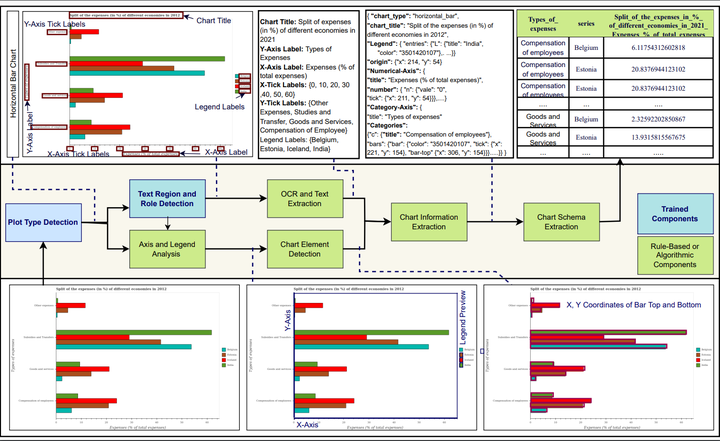Program Synthesis for Complex QA on Charts via Probabilistic Grammar Based Filtered Iterative Back-Translation

Abstract
Answering complex reasoning questions from chart images is a challenging problem requiring a combination of natural language understanding, fine-grained perception, and analytical reasoning. Current chart based Question Answering (QA) approaches largely address structural, visual or simple data retrieval type questions with fixed-vocabulary answers and perform poorly on reasoning queries. We focus on answering realistic, complex, reasoning-based questions where the answer needs to be computed and not selected from a fixed set of choices. Our approach employs a neural semantic parser to transform Natural Language (NL) questions into SQL programs and execute them on a standardized schema populated from the extracted chart contents. In the absence of program annotations, i.e., in a weak supervision setting, we obtain initial SQL predictions from a pre-trained CodeT5 semantic parser and employ Filtered Iterative Back-Translation (FIBT) for iteratively augmenting our NL-SQL training set. The forward (neural semantic parser) and backward (language model) models are initially trained with an external NL-SQL dataset. We iteratively move towards the NL query distribution by generating NL questions from the synthesized SQL programs using a Probabilistic Context-Free Grammar (PCFG) where the production rule probabilities are induced to be inversely proportional to the probabilities in the training data. We filter out the generated NL queries with mis-matched structure and compositions. Our FIBT approach achieves State-of-the-Art (SOTA) results on reasoning-based queries in the PlotQA dataset yielding a test accuracy of 60.44%, superseding the previous baselines by a large margin.